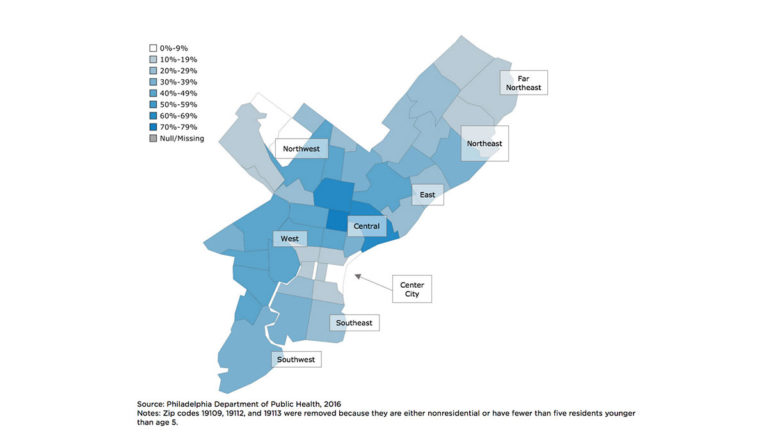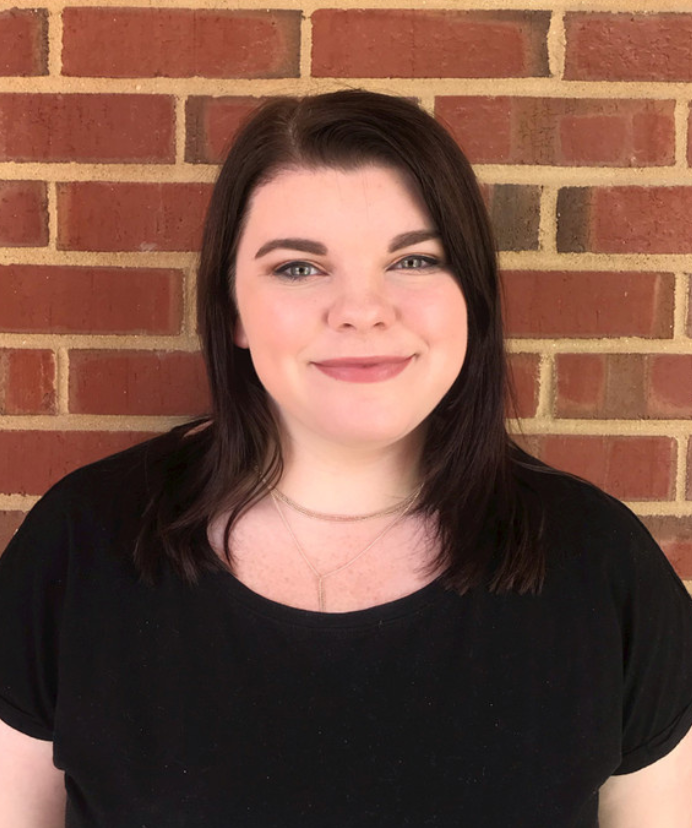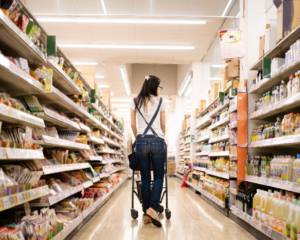Childhood Poverty in Philadelphia
Childhood poverty is not distributed evenly either across the country or within cities. Nearly one-third of Philadelphia’s infants and toddlers live in poverty.

Read Time: 2 minutes
Published:
About 21% of children in the United States, 15 million, live below the federal poverty line. Some researchers suggest that the federal poverty threshold—a household income measure used to determine eligibility to a variety of government support programs—is set too low and that families actually need about twice that income to cover basic expenses. Using this revised measure, over 40% of children in the United States live in low-income families.
Childhood poverty is not distributed evenly either across the country or within cities. The percentage of children living in poverty in Philadelphia is higher than the US national average. Nearly one-third of Philadelphia’s infants and toddlers live in poverty.
The map above shows the percentage of children under age five living in poverty in Philadelphia by zip code. The darker the color, the higher the proportion of children living in poverty. The disparities are large. Some areas of the city (like in the Northwest region) have less than 10% of children living in poverty, while others (like the Central part of the city) have up to 79% of children living in poverty.
Experiencing poverty during childhood is associated with a host of negative health outcomes. Poor children are more likely to develop asthma, become obese, and experience violence. They are also more likely to be exposed to lead, which can impair cognitive development.
There is work being done to alleviate childhood poverty in the city. Public Citizens for Children and Youth, for instance, is advocating for “increased investment and access to services” through policies such as the Earned Income Tax Credit and the Child Tax Credit.
Databyte via Dale Epstein, Sara Shaw, Tyler McDaniel, and Kathryn Steber, The Status of Infants and Toddlers in Philadelphia. Child Trends June 2018 Report.



